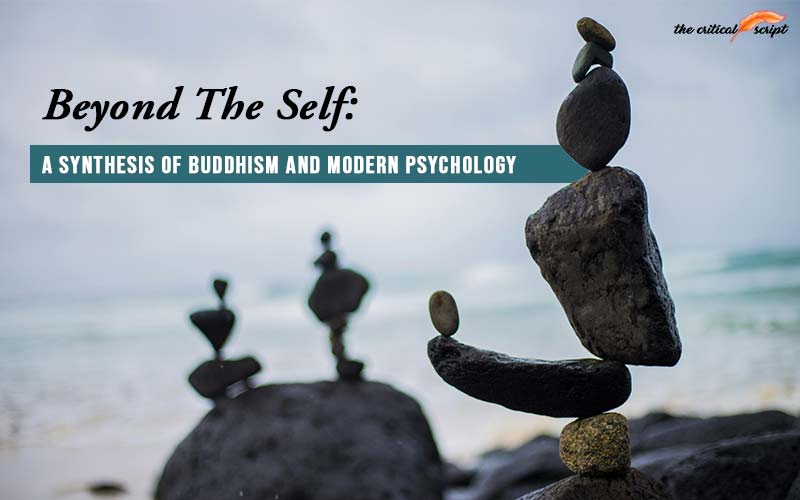
Beyond The Self: A Synthesis of Buddhism and Modern Psychology
“Our life is shaped by our mind: we become what we
think”
- Siddhartha Gautama, The Buddha (536 BC)
In the labyrinth of the human mind, each turn and corner holds secrets that have baffled even the most brilliant of minds. For centuries, scientists and philosophers have ventured into this enigmatic realm, armed with tools of reason and inquiry, yet the full expanse of our mental landscape remains elusive.
As we peel back the layers of our consciousness, what we uncover often only deepens the mystery.
Yet, amidst this intricate puzzle, one
timeless pursuit stands out as a beacon of clarity: the quest for wisdom.
Wisdom, in its purest form, offers not just answers but profound understanding,
guiding us through the fog of uncertainty.
But the question is, how can we attain that wisdom?
Well, Buddhism, with its timeless teachings from the Buddha, weaves an unexpectedly profound connection with today’s psychological insights. This ancient tradition unfolds a treasure trove of wisdom that mirrors and enhances our modern understanding of the mind.
Zen Psychology: The Four Noble Truths & Eightfold Path of Buddhism
Both Buddhism and modern psychology delve into
the nature of consciousness with a shared goal: to illuminate the path to
greater understanding and well-being. While Buddhism offers ancient wisdom on
the mind’s depths, modern psychology employs contemporary methods to explore
the same terrain.
In this shared quest for understanding the
workings of our minds, Buddhist teachings provide a comprehensive framework. At
the heart of this framework are the Four Noble Truths, which act as fundamental
guideposts for navigating our thoughts and emotions.
The Buddha identified perpetual
unsatisfactoriness, or Dukkha (First Noble Truth) as a fundamental
aspect of the human experience. This concept reflects the pervasive sense of
dissatisfaction that often colours our lives.
From the toys we yearn for in childhood to the
salary we seek in adulthood, we frequently find ourselves craving more, never
quite feeling fulfilled. Despite achieving our goals or acquiring what we
thought would bring us happiness, there's often a lingering sense that
something is missing. This ongoing dissatisfaction highlights a deeper issue:
our tendency to cling to inherently impermanent things.
The Samudaya
(Second Noble Truth) reveals
that our suffering stems from our tendency to cling to things that are always
changing. We know that everything—from clouds and trees to our belongings like
clothes, phones, cars, and money—keeps constantly changing, the Buddha’s
insight is about how we react to this impermanence. We often make the mistake
of tying our sense of self to these temporary things.
For example, if our car gets a dent, we might
feel deeply hurt because we’ve come to see the car as an extension of who we
are. This attachment to impermanent objects fuels our dissatisfaction and shows
us that we need to rethink how we connect with our possessions and ourselves.
The (Third
Noble Truth) or Nirodha conveys that the end of suffering is
possible. It suggests that by addressing the underlying causes of our
dissatisfaction, we can attain a state of greater peace and contentment.
Mindfulness practices such as paying attention
to your breath when you’re feeling stressed can help break the cycle of
suffering by fostering a sense of calm and presence. For example, if you find
yourself getting frustrated with a long wait at the grocery store or the
doctor’s office, mindfulness techniques can help you shift your focus from
irritation to acceptance.
Buddhism
has no particular benefit to merely believing in a doctrine. Instead, the
emphasis is on living the doctrine and walking the path.
The
(Fourth Noble Truth) or Marga offers
a path to overcoming suffering: the Noble Eightfold Path. This path provides
practical guidelines for ethical and mental development, leading to liberation
from dissatisfaction. It is divided into eight interconnected factors that
guide us in cultivating a balanced and mindful approach to life and are
followed as:
1)
Right View: Our actions have consequences, death is not the end, and our
actions and beliefs have consequences after death.
2) Right Intent: Also known as
"right thought", "right aspiration", or "right
motivation.
3) Right Speech: No lying, no
rude speech, no telling one person what another says about him.
4) Right Conduct or Action: No
killing or injuring, no taking what is not given, no sexual misconduct, no
material desires.
5) Right Livelihood: No
trading in weapons, living beings, meat, liquor, or poisons.
6) Right Effort: Preventing
the arising of unwholesome state
7) Right Mindfulness: A
quality that guards or watches over the mind
8) Right Concentration:
Practicing four stages of dhyana - meditation.
How Buddhist Concepts Inform Modern Psychological Practice
Our brains have evolved primarily to help us
survive, often at the expense of our happiness, leaving us with a persistent
feeling of discontent and yearning for more. And at the very heart of Buddhism
is a compassionate effort to unveil the roots of suffering.
The Dalai Lama has highlighted the potential
for harmony between Buddhism and science, urging Western scholars to thoroughly
investigate both meditative practices and Buddhist views on the human mind. His
call has motivated an increasing number of scientists and philosophers to
explore these connections, leading to studies such as brain scans of meditators
and analysis of Buddhist teachings.
Modern psychology has increasingly affirmed
what Buddhism has long known: meditation is a powerful tool for enhancing
well-being. Research reveals that meditation can drastically lower stress
levels, reduce anxiety, boost focus, and elevate emotional health.
It empowers us to connect deeply with the
present moment and foster a clear, open mindset. For instance, through
meditation, we learn to view our emotions as passing sensations rather than
concrete events, enabling us to observe and understand our feelings without
being overwhelmed by them. This practice helps us develop a more detached
perspective, allowing for greater emotional clarity and insight.
A Synergy of Wisdom: The Intersection of Buddhism and Psychology
Buddhism
has a deep root in philosophy but in the process of converting itself into
science, it is somehow losing its roots. This is not to suggest that psychology
should cease to be a distinct evidence-based field. Rather, the emphasis here
is on the potential benefits of reconnecting with its philosophical roots. By
doing so, both disciplines could foster fruitful cooperation.
Science
and religion do not always have to be at odds – instead, Modern psychology, a
relatively young discipline grounded in empirical research, can benefit from
the depth of wisdom embedded in Buddhist philosophy. Conversely, Buddhism, with
its nearly 2,500-year-old tradition of exploring the nature of the mind and
human suffering, can gain new insights and applications through contemporary
scientific methods.

“Perhaps no other classical
philosophical tradition, East or West, offers a more complex and
counter-intuitive account of mind and mental phenomena than Buddhism.”
-Christian Coseru (2017)
Disclaimer: The opinions expressed in this article are those of the author's. They do not purport to reflect the opinions or views of The Critical Script or its editor.

Newsletter!!!
Subscribe to our weekly Newsletter and stay tuned.

















Related Comments